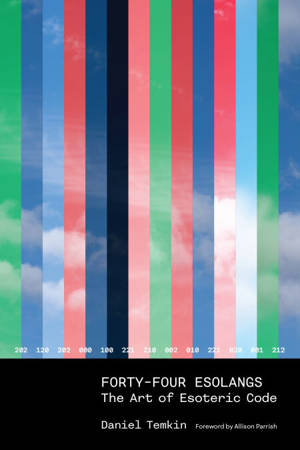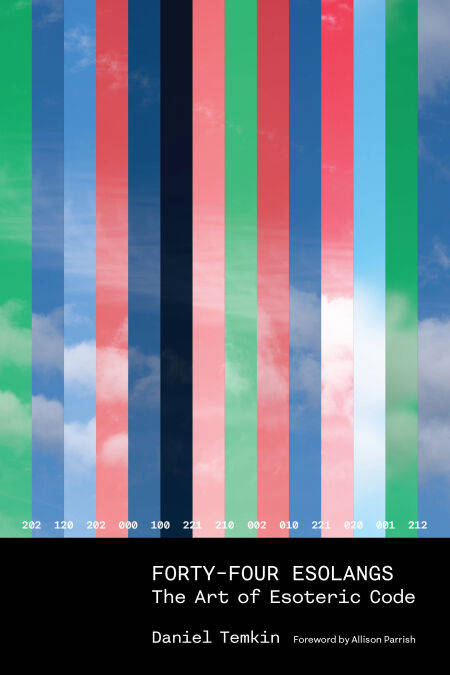
- Afhalen na 1 uur in een winkel met voorraad
- Gratis thuislevering in België vanaf € 30
- Ruim aanbod met 7 miljoen producten
- Afhalen na 1 uur in een winkel met voorraad
- Gratis thuislevering in België vanaf € 30
- Ruim aanbod met 7 miljoen producten
Zoeken
€ 29,56
+ 29 punten
Omschrijving
A riveting collection of one artist’s many approaches to esolangs—esoteric programming languages—showcasing the form’s limitless artistic potential.
In Forty-Four Esolangs, Daniel Temkin challenges conventional definitions of language, code, and computer, showing the potential of esolangs—or esoteric programming languages—as pure idea art. The languages in this volume ask programmers to write code in the form of prayer to the Greek gods, or as a pattern of empty folders, or to type code in tandem with another programmer, each with one hand on the keyboard, their rhythm and synchrony signifying computer action. Temkin includes languages written over the past fifteen years, along with some designed especially for this book. Other pieces are left as prompts for the reader to simply consider or perhaps to implement on their own.
Esolangs are a collaborative form. Each language is a complete world of thought, where esoprogrammers build on the work of esolangers to make new discoveries. The language Velato, for instance, asks programmers to write music as code; while the language creates constraints for the programmer, each programmer brings their own coding and musical sensibility to the language. Other pieces are pure poetic suggestion in the legacy of Yoko Ono’s event scores. These ask the programmer to, for example, follow the paths of the clouds over a single day and construct a language in response that uses those movements as code. Just as Ben Vautier claimed everything is art, this book blurs the lines between computation and everything else.
In Forty-Four Esolangs, Daniel Temkin challenges conventional definitions of language, code, and computer, showing the potential of esolangs—or esoteric programming languages—as pure idea art. The languages in this volume ask programmers to write code in the form of prayer to the Greek gods, or as a pattern of empty folders, or to type code in tandem with another programmer, each with one hand on the keyboard, their rhythm and synchrony signifying computer action. Temkin includes languages written over the past fifteen years, along with some designed especially for this book. Other pieces are left as prompts for the reader to simply consider or perhaps to implement on their own.
Esolangs are a collaborative form. Each language is a complete world of thought, where esoprogrammers build on the work of esolangers to make new discoveries. The language Velato, for instance, asks programmers to write music as code; while the language creates constraints for the programmer, each programmer brings their own coding and musical sensibility to the language. Other pieces are pure poetic suggestion in the legacy of Yoko Ono’s event scores. These ask the programmer to, for example, follow the paths of the clouds over a single day and construct a language in response that uses those movements as code. Just as Ben Vautier claimed everything is art, this book blurs the lines between computation and everything else.
Specificaties
Betrokkenen
- Auteur(s):
- Uitgeverij:
Inhoud
- Aantal bladzijden:
- 136
- Taal:
- Engels
- Reeks:
Eigenschappen
- Productcode (EAN):
- 9780262384049
- Verschijningsdatum:
- 22/09/2025
- Uitvoering:
- E-book
- Beveiligd met:
- Adobe DRM
- Formaat:
- ePub

Alleen bij Standaard Boekhandel
+ 29 punten op je klantenkaart van Standaard Boekhandel
Beoordelingen
We publiceren alleen reviews die voldoen aan de voorwaarden voor reviews. Bekijk onze voorwaarden voor reviews.








